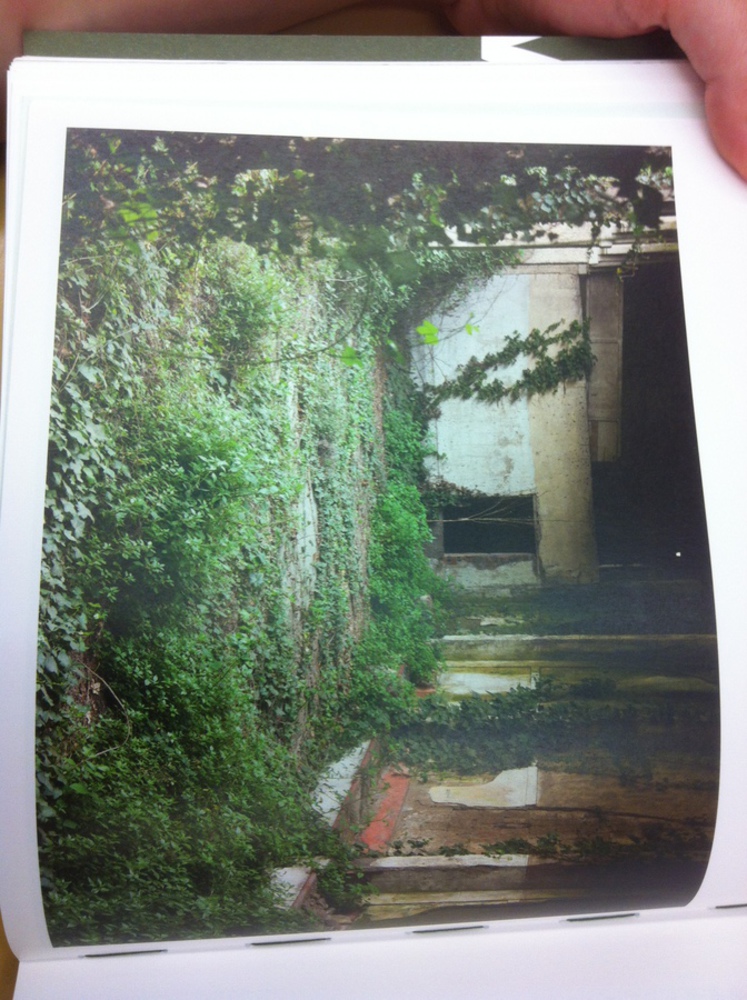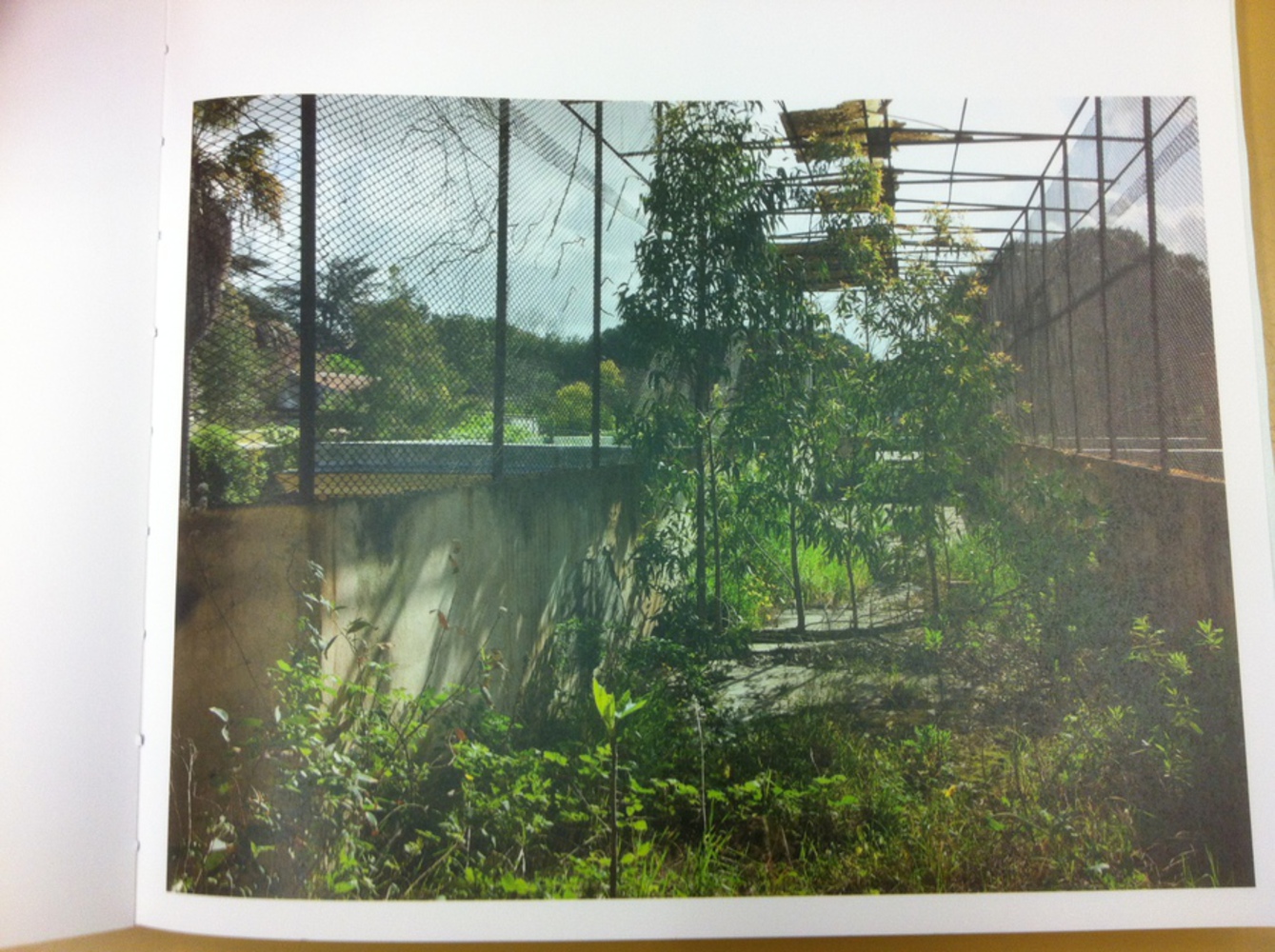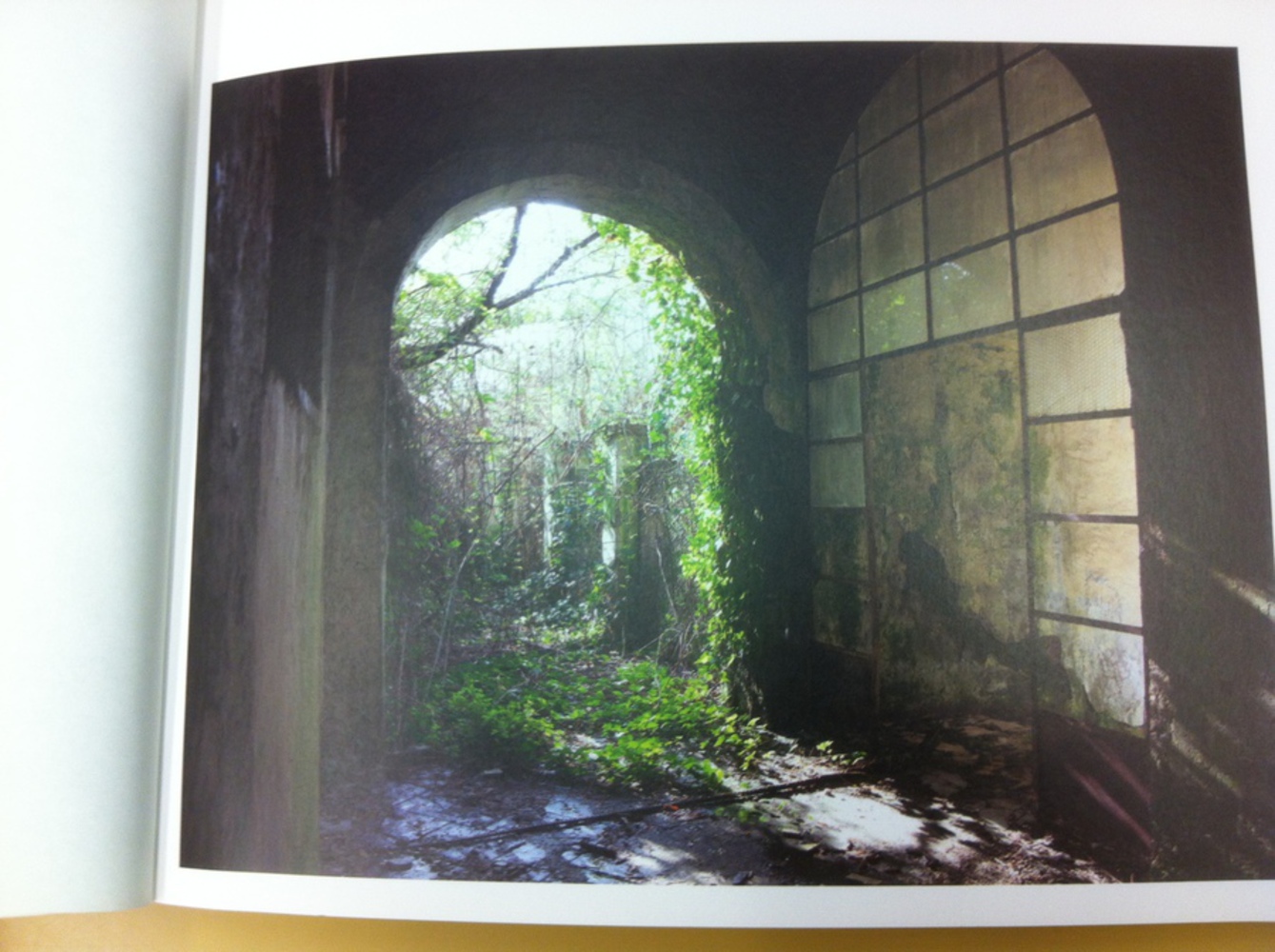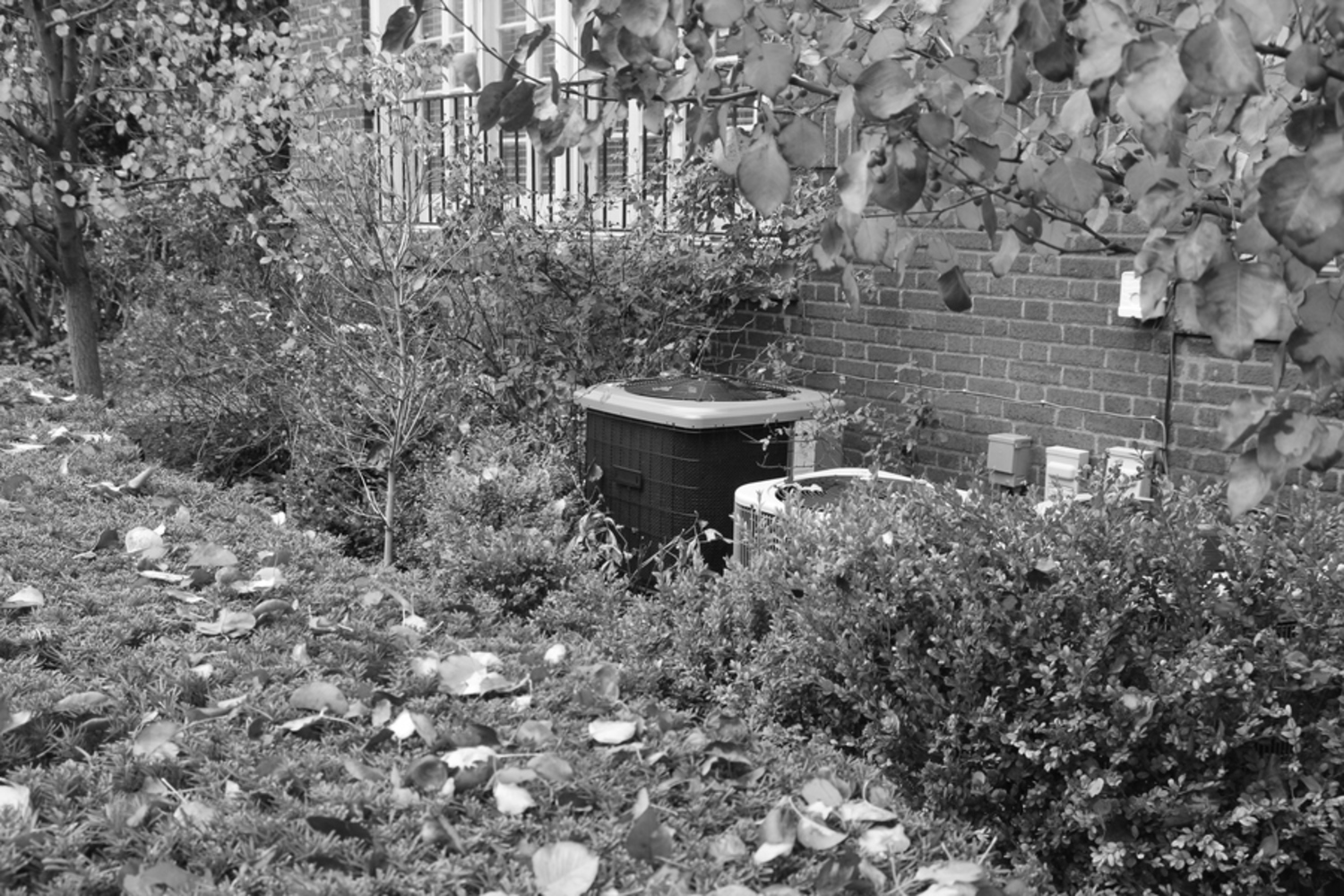Top photo: An open side of the building covered with ivy and assorted brush. There's greenery in the foreground while the concrete walls take up the background, with a dark doorway in the very back. The subject is mostly the empty space that the vegetation is slowly filling. Light filters in through openings to the left just out of view. The light is balanced because it enters from the left and then reflects off the blank wall on the right.
Middle photo: A concrete ravine with chain link fence on both sides, and weeds and small trees growing in it. The foreground is the vegetation in this ditch, the background is the landscape around the site (trees, thicker foliage). The walls slant more right than left, leading the overall composition to be not quite symmetrical, but fairly balanced since there are similar features on both sides. It's shot outside, with sunlight coming from approximately overhead.
Bottom photo: Taken from inside a building looking out a large archway, with plants growing outside and creeping in. The bright doorway on the left contrasts with the dull, broken, flat one on the right, juxtaposing nature with manmade structures. Shadows are cast through the doorway onto the floor inside, in the foreground.
I love scenes in which nature has reclaimed areas once inhabited and built up by people, so that's what mainly attracted me to these photographs. It reminds me of entropy, the poem Ozymandias, and trite sayings like "Time heals all wounds."
All the photographs were shot with natural light, apparently in early winter. Using sunlight is appropriate, given that the manmade features of the site have been given up to nature. The quality of the light is very neutral--not particularly warm, as sunlight sometimes is, because she's not trying to portray nature as benevolent, but rather as an inevitable force that merely exists and can only be delayed, not avoided.
The spaces are mostly filled with greenery over ruins of old structures, showing the new life engulfing and burying the old.
The shots tend to be down corridors, through tunnels, or even just along walls as the middle one above is. I feel that somehow this also shows the progression of time, in a way; when gazing down the hall, you are looking into the past or the future, or perhaps both.
The photos also aren't overly composed; she found interesting views, but mostly shot them as they appeared to anyone who might come by. Since these places are abandoned, she doesn't need to go to any great lengths to find a perspective others haven't seen.
For more examples from Libera Viva, go here (must use andrew account): https://drive.google.com/a/andrew.cmu.edu/folderview?id=0ByNdHBj2861ySzlJOXFfTFo5N0U&usp=sharing
Overall, my process for shooting the "replica" images was to make a circuit of part of my neighborhood in Shadyside and the route I take to campus looking for anywhere plant life had built up, and especially areas that seemed somewhat abandoned or just dilapidated like the the hospital in Libera Viva.



